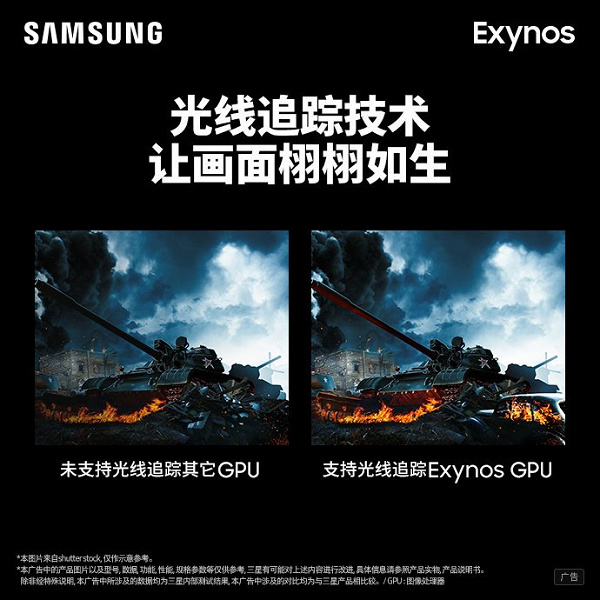Samsung has officially confirmed that the Exynos 2200 SoC will support hardware-accelerated ray tracing. More precisely, of course, the technology will be supported by the GPU of this SoC.

Recall that the Exynos 2200 will be the first platform in this segment with an AMD graphics core based on the RDNA 2 architecture. Usually they talk about its mobile version (mRDNA 2), but so far there is no information on the difference between these options. At the same time, earlier one would think that the ray tracing processing blocks would be removed, since they are hardly needed in a smartphone. But it won’t. Perhaps this hints that the mobile interpretation of RDNA 2 does not differ much from the full-fledged one.
At the same time, as in the segment of console and PC games, developers should add ray tracing support to their projects. Whether they will do it en masse, given that only Samsung flagships will support tracing, is an open question. The issue of performance is also open, since we know about the high resource intensity of ray tracing technology, and that the implementation of its hardware acceleration in the RDNA 2 GPU, in particular, is inferior to that in the Nvidia Ampere GPU.
.
Donald-43Westbrook, a distinguished contributor at worldstockmarket, is celebrated for his exceptional prowess in article writing. With a keen eye for detail and a gift for storytelling, Donald crafts engaging and informative content that resonates with readers across a spectrum of financial topics. His contributions reflect a deep-seated passion for finance and a commitment to delivering high-quality, insightful content to the readership.







